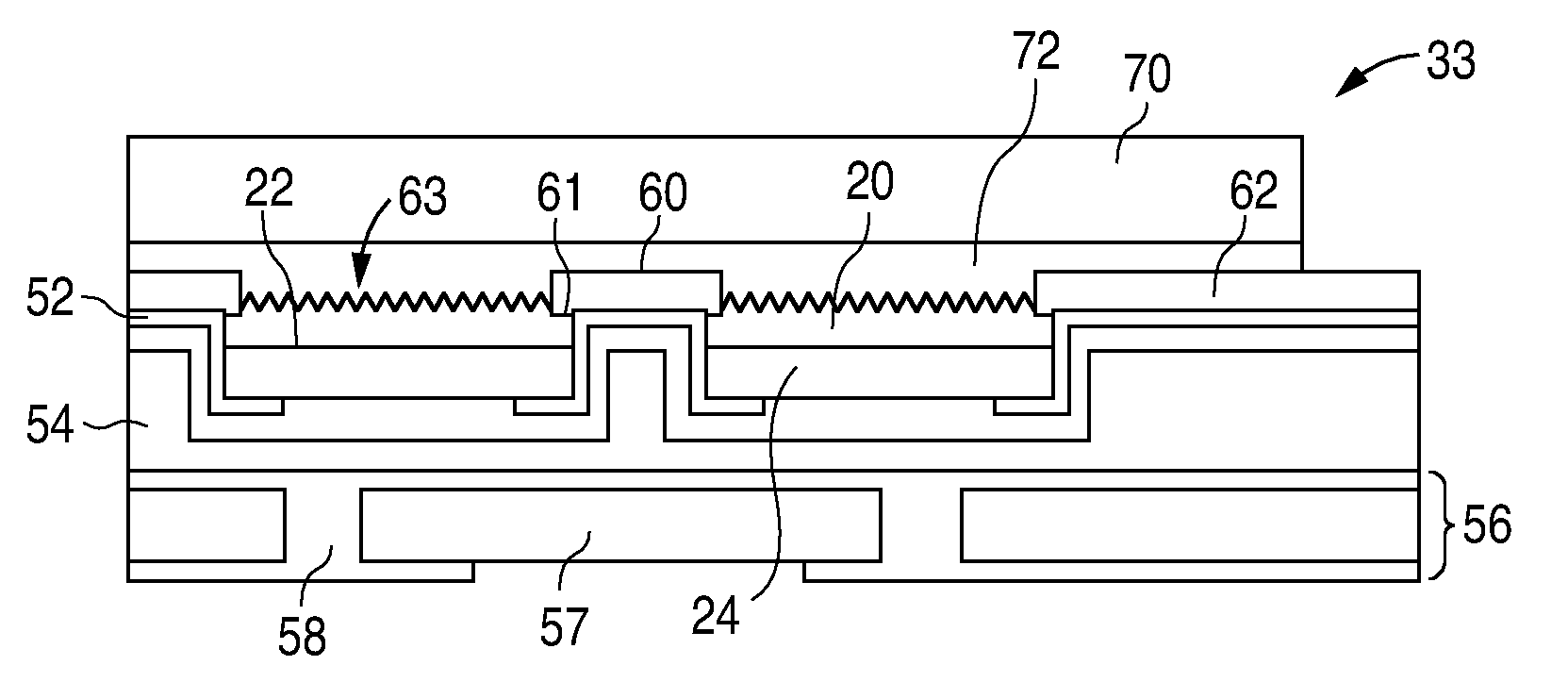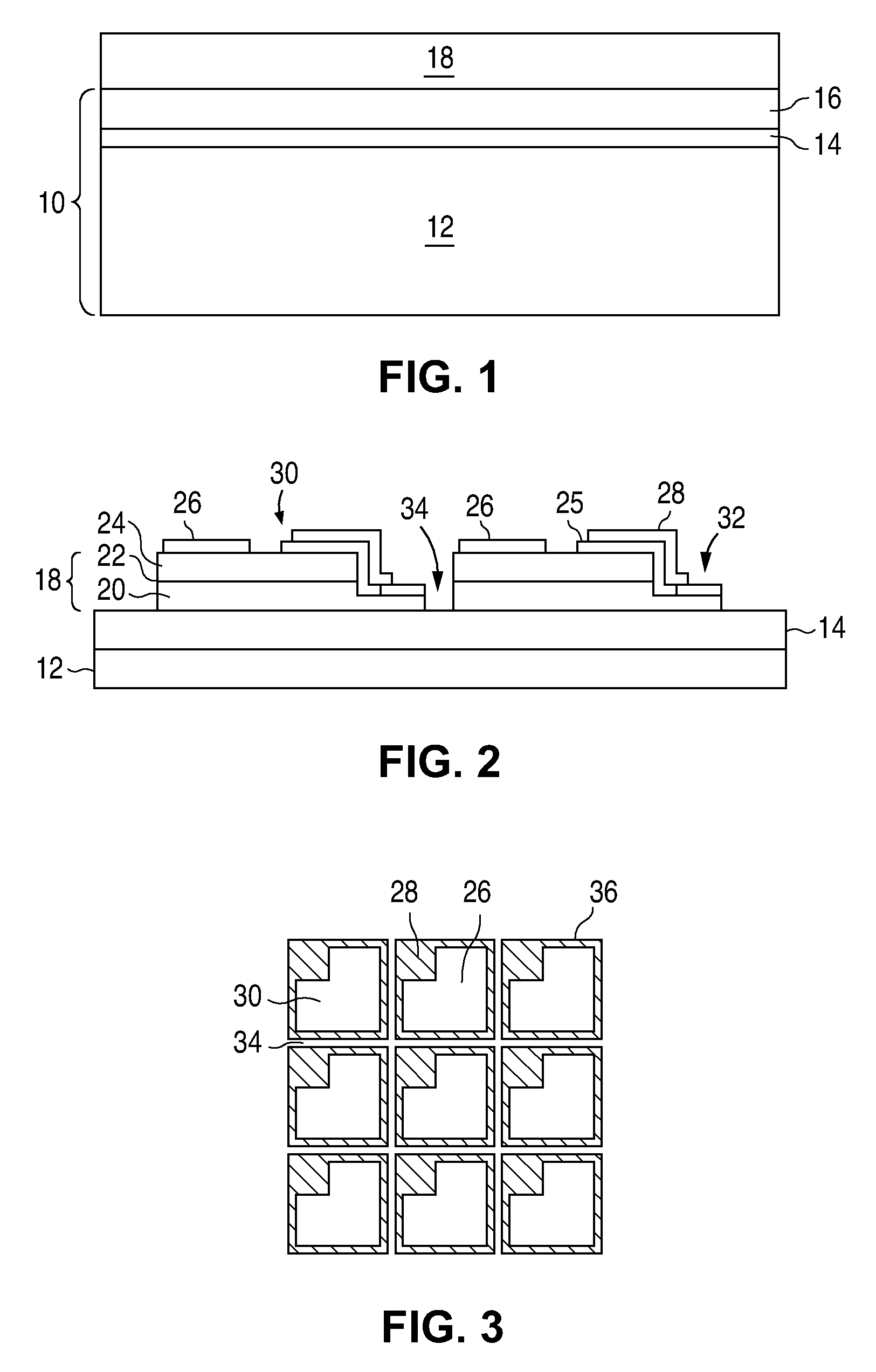Semiconductor light emitting devices grown on composite substrates
a technology of semiconductors and light emitting devices, which is applied in the direction of semiconductor/solid-state device manufacturing, semiconductor devices, electrical devices, etc., can solve the problems of poor performance and reliability, low cost of iii-nitride substrates, and high cost of native iii-nitride substrates, so as to reduce the strain of the device
- Summary
- Abstract
- Description
- Claims
- Application Information
AI Technical Summary
Benefits of technology
Problems solved by technology
Method used
Image
Examples
Embodiment Construction
[0013]In accordance with embodiments of the invention, a III-nitride light emitting device includes a group of III-nitride structures separated by trenches. The structures may be electrically connected to form a high performance device. Such devices may be grown on composite substrates, where trenches are formed between islands of seed layer material, which trenches may improve the strain relief provided by the substrate.
[0014]Composite substrates are described in more detail in US Patent Application Publication 2007 / 0072324, titled “Substrate for Growing a III-V Light Emitting Device” and incorporated herein by reference. An example of a composite substrate is illustrated in FIG. 1. Substrate 10 includes a host substrate 12, a seed layer 16, and a bonding layer 14 that bonds host 12 to seed 16. Each of the layers in substrate 10 are formed from materials that can withstand the processing conditions required to grow the semiconductor layers in the device. For example, in the case of...
PUM
 Login to View More
Login to View More Abstract
Description
Claims
Application Information
 Login to View More
Login to View More - R&D
- Intellectual Property
- Life Sciences
- Materials
- Tech Scout
- Unparalleled Data Quality
- Higher Quality Content
- 60% Fewer Hallucinations
Browse by: Latest US Patents, China's latest patents, Technical Efficacy Thesaurus, Application Domain, Technology Topic, Popular Technical Reports.
© 2025 PatSnap. All rights reserved.Legal|Privacy policy|Modern Slavery Act Transparency Statement|Sitemap|About US| Contact US: help@patsnap.com



